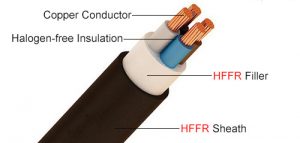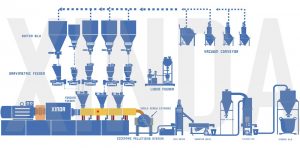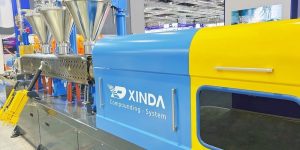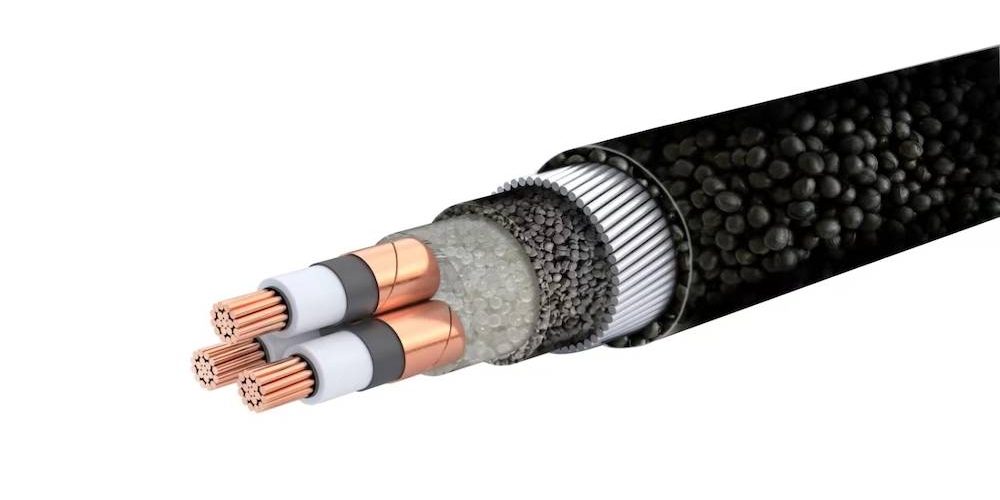Introduction of HFFR Cable Compounds
In the realm of cable technology, Halogen-Free Flame Retardant (HFFR) cable compounds play a crucial role in ensuring human safety. This article delves into the significance of HFFR in maintaining safety standards, the composition and manufacturing process of HFFR cable compounds, their diverse applications across industries, and the advantages of employing HFFR cables. Additionally, we will explore why the Xinda Co-Kneader compounding line stands out as an ideal choice for manufacturing HFFR cable compounds.
What is HFFR cable compounds?
HFFR stands for Halogen-Free Flame Retardant, a type of cable compound designed to limit the spread of fire and reduce smoke emission during a fire incident. Unlike traditional PVC cables that contain halogen-based materials, HFFR cables utilize flame retardant additives without halogen elements, minimizing potential hazards associated with halogen combustion.

The Importance of HFFR in Ensuring Human Safety:
Reduced Fire Spread: HFFR cables are engineered to resist combustion and slow down the spread of fire. This characteristic is pivotal in preventing the rapid propagation of flames in case of a fire incident, contributing significantly to the safety of occupants.
Low Smoke Emission: During a fire, smoke inhalation poses a severe threat to human health. HFFR cables produce minimal smoke when exposed to fire, improving visibility for evacuation efforts and reducing the respiratory risks associated with toxic smoke.
Compliance with Safety Standards: Many industries, especially those involving public spaces and critical infrastructure, adhere to stringent safety regulations. HFFR cables are designed to meet or exceed these standards, providing an added layer of assurance regarding human safety.
HFFR Formulation Ingredients:
HFFR cable compounds consist of a blend of polymers, flame retardant additives, and other materials. Common polymer matrices include polyethylene (PE), polypropylene (PP), and ethylene-vinyl acetate (EVA). Flame retardant additives like aluminum hydroxide and magnesium hydroxide are crucial for enhancing fire resistance. Usually, the ATH or MGH powder filling percentage will range from 55%~65% based on different formulation.
Manufacturing Process:
The production of HFFR cable compounds involves a meticulous process of compounding and extrusion. The raw materials are mixed in precise proportions using specialized equipment, such as the BUSS Kneader or Xinda Co-Kneader compounding line. This ensures uniform dispersion of additives and consistent cable performance.

Applications of HFFR Cables in Various Industries:
Construction Industry: HFFR cables are extensively used in construction for wiring and power distribution. Their flame-retardant properties are critical in minimizing the risk of fire in buildings.
Transportation Sector: In automotive and aerospace applications, where space is confined, the low smoke emission of HFFR cables becomes crucial. These cables are employed in vehicle wiring systems and aircraft interiors.
Telecommunications: The telecommunications industry utilizes HFFR cables to ensure reliable and safe data transmission. The flame-retardant nature of these cables is vital in preventing network failures caused by fire incidents.
Oil and Gas Exploration: Harsh environments in the oil and gas sector demand cables with robust fire resistance. HFFR cables find applications in drilling operations and offshore platforms.
Why Xinda Co-Kneader Compounding Line is Good for HFFR Cable Compounds:
Precision and Consistency: Since ATH and MDH filling materials have relatively narrow processing temperature, Xinda Co-Kneader compounding line excels in providing precise temperature control over the compounding process. Meanwhile Co-Kneader efficient and tender shear can ensure consistent dispersion of flame retardant additives in the cable compound.
High Throughput: This compounding line is known for its high throughput capabilities, allowing for efficient and large-scale production of HFFR cable compounds to meet industry demands.
Versatility: The Xinda Co-Kneader compounding line is versatile and can handle a wide range of polymer matrices and additives, making it suitable for the diverse formulations used in HFFR cable manufacturing.
Energy Efficiency: With advanced energy-efficient features, the Xinda Co-Kneader compounding line minimizes energy consumption during the manufacturing process, contributing to sustainability.

HFFR cable compounds stand as a pivotal innovation in the cable industry, prioritizing human safety by limiting fire hazards and minimizing smoke emissions. The composition, manufacturing process, and applications of HFFR cables underscore their importance in various industries. The advantages of using HFFR cables, coupled with the efficiency of the Buss Kneader and Xinda Co-Kneader compounding line, make a compelling case for the adoption of HFFR technology in cable manufacturing. As safety regulations become more stringent, the role of HFFR cables is poised to expand, ensuring a safer and more sustainable future across industries.
